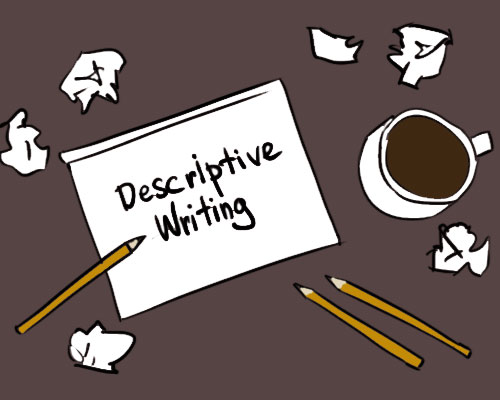Back to: ENGLISH LANGUAGE SS1
Welcome to class!
In today’s class, we will be talking about figures of speech, etc. Enjoy the class!
Oral Skills.
Figures of Speech- Simile, Metaphor, Irony, Personification and Rhetorical Question. Structure: Adverbial Clause.
Essay Writing: Descriptive.
Speech Work: Diphthongs.

Comprehension/oral skills
ADVERTISING: Page 86-87 of Effective English.
The passage discusses two basic objectives of advertising, which is: to inform the target audience about the product or service; and to create or stimulate demand for the product or service through persuasion.
Evaluation
Answer the questions below the passage.
Figures of speech
Content:
- Meanings
- Kinds
Figures of speech are ways of creating imagery by using figurative language, through which we conjure the picture of two or more things into writing and thereby bringing out very aptly the quantity or idea we are presenting.
Kinds
Simile:
A simile is that figure of speech in which a likeness is definitely or formally expressed. It is introduced by “like” “as” etc.
Examples
- He runs like a hare
- Her cheeks appear as the dawn of day.
Metaphor:
It is a figure of speech founded on the resemblance. It is also used like simile to create a picture or images of events without using as or like.
Examples
- The general, who is a lion in the field, has seen many wars.
- He is no good at crickets, he has okra fingers.
Personification:
It is the transfer of the quality of human being to animals and inanimate objects.
Examples
- Let the floods clap their hands.
- Confusion heard his voice.
Irony:
It is also a device by which a writer expresses a contrary meaning, which appears contrary to the stated or ostensible one.
Examples
- Charles is so brilliant that he passed one subject out of his nine papers.
- He is such a good keeper that he conceded ten goals in the first half of the match.
Rhetorical questions:
This is a kind of question which requires no answer.
Evaluation
- Give one example for each of the figures of speech taught.

Essay writing (descriptive)
A descriptive essay is the one that requires you to write a description of, for example, an object, a person, an animal, an incident or scene.
Let us examine how a descriptive essay question like the following one should be treated.
“Describe a rainy day you will live to remember
Format
- Describe the ordinary details of a rain
- Describe the kind of rain it was and how long it lasted
- State the effects of the rain: both the comfort which the rain brought and the inconveniences or damages it caused
- Do not limit your consideration to the area where you live (urban or rural)
- Show great imagination in your description
- The presentation of the essay should be logically arranged. Describe incidents that took place in the morning before moving on to those that followed in the afternoon, then, later in the evening.
Evaluation
Write an essay on the title “A rainy day I will live to remember”
Speech work: diphthongs
We have eight diphthongs. They are two quality sounds. To realize their sounds, you must glide from the first to the second sound:
The eight diphthongs are these: /ei/, /au/, /ai/, /эi/, /iƏ/, /eƏ/, /υƏ/
/ei/
Spelling variants and words examples are:
- “a” – cake, brake, make, lake, plate,
- “ai” – braid, sail,
- “ay” – May, day
- “au” – gauge,
- “ey” – they, hey, prey
- “ei” – rein, reign, heinous
- “e” – ballet, brought, chalet
- “ee” – fiancée, nee
- “ea” – great, break, steak
/ Əυ/
The long sound for the letter “o”
As in:
- “au” – chauffeur, faults
- “o” – go, rote, note
- “eo” – hoe, foe
- “oa” – goat, both, road
- “ou” – grow, thrown
- “ew” – sew, sewn
- “oo” – brooch
/ai/
- “ai” – aisle, naira
- “ei” – height, either
- “ey” – eye
- “uy” – buy, guy
- “ye” – bye, dye
- “y” – Scythe, by, sky
- “ie” – pie, tie, lie, die
/aυ/
- “ou” – doubt, count, stout, about,
- “au” –Nassau
- “ow” – how, cow, allow
/Ɔi/
as in
- “oi”- boil, oil, noise
- “oy” – boy, employ
- “uoy” – buoy, buoyant
/iƏ/
as in
- “e” – era, period
- “ea” – idea, pear, beard
- “ere” – here, mere
- “eer” – peer, sheer
- “ier”- pier, weir
- “ir” – fakir
/eƏ/
as in
- “ir” – air, fair, hair
- “are” – care, fare, dare
- “ear”- bear, tear, wear
- “ere”- there, where
/uƏ/
as in
“u” – plural, during
“ure” – pure, cure, sure
“our” – tour
“oor” moor, boor, poor
Evaluation
Write two examples for each of the eight diphthongs
Geeneral evaluation
From the words lettered A to D, choose the word that has the same vowel sound as the one represented by the letter(s) underlined.
- packet a. psychology b. physics c. pseudonym d. sparkle
- tin a. thin b. tent c, then d. hatch
- leagues a. lick b. pleasures c. people d. learn
- hunt a. hurt b. hot c. hoot d. run
- sword a. word b. occasion c. boys d. pass
In our next class, we will be talking about Structures: Learning about Noun Clause; Vocabulary Development: Transportation- Aviation, Rail, Road and Maritime. Speech Work: Introduction to Consonant Sounds. Essay Writing: More on Narrative- A story that ends with, “It Pays to be Hard-working”. We hope you enjoyed the class.
Should you have any further question, feel free to ask in the comment section below and trust us to respond as soon as possible.


